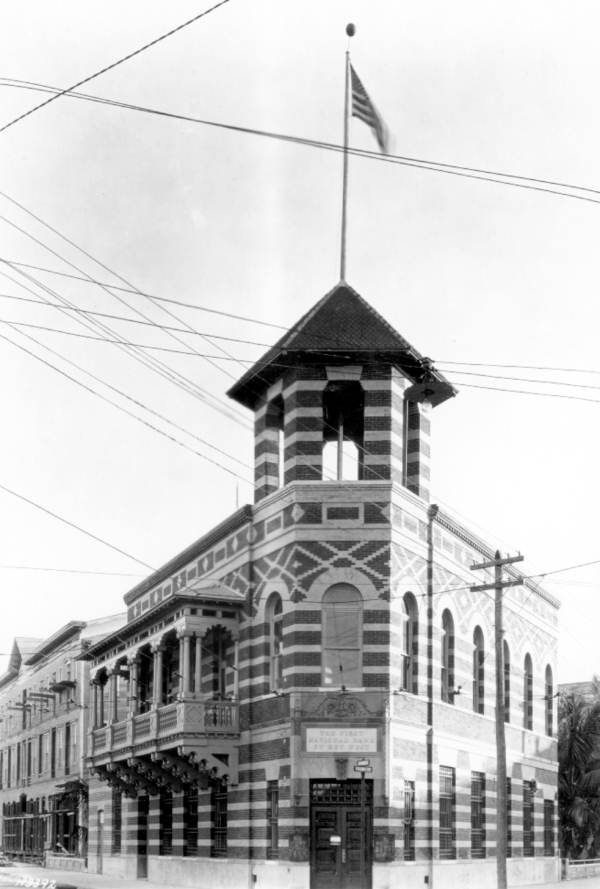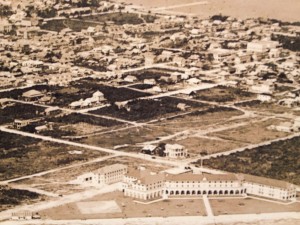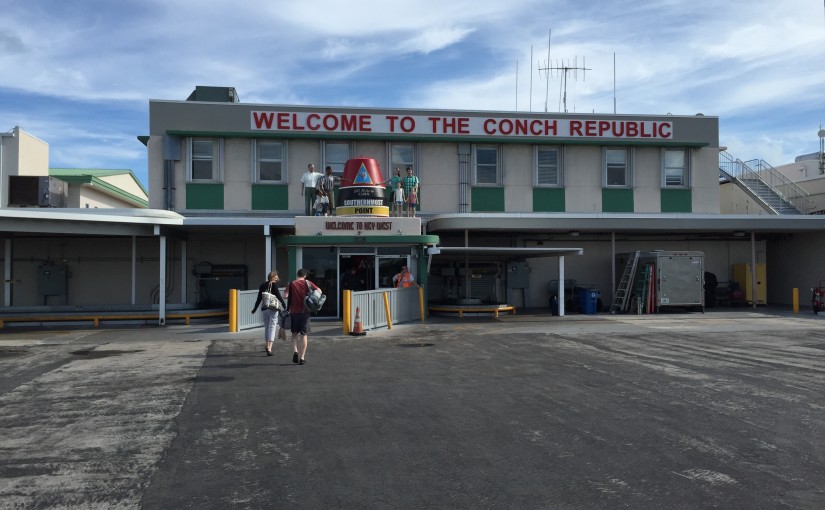My friend, Deb, asked, “What was Key West like before AC”. Well, it was hot, sometimes brutally so. But we had fans, a couple of large ones we moved from porch to dining room to kitchen as needed and some smaller ones at night. Later, I remember having a little one that I put right on my bedside table. Some nights, even that fan was not enough and I would wet a washcloth and wipe my face and arms, and air-condition myself. That works pretty well. On Sundays, after supper, we would take a drive around the Boulevard, and end up on the White Street pier in the cool of the evening. You could drive onto it back in those days and park. My parents would take out our plastic lattice lawn chairs, set them out in the cool air off the ocean, and visit with friends.
Key West does usually cool off at night, especially if there is a slight breeze blowing. No matter how hot the day, the evenings are usually lovely. The air is soft, warm and caressing. The sky is clear and the moon and stars are bright. A rising full moon sparkles on the water and the constellations are easily identifiable. Of course, you have to leave your air-conditioned home and the television to experience these things.
OK, that is how we coped with those brutal hot and humid and close nights, summer and early fall, and during hurricane season. You don’t even ever want to be caught in a boarded up house when a tropical storm or hurricane comes by and you lose electricity. Stifling.
Back to fans. The good thing is the windows were open. You could hear street noise, but there was a lot less of it in those days. There were no Roosters crowing all hours of the night like there are today. Some would tell you they have always have been in Key West. Well, they weren’t any in my neighborhood and I don’t remember them anywhere else. They were all over the place until recently, but there were so many complaints, the city fathers must have rounded some up. I started passing around stories about bird flu. I don’t know if that helped also. How did I get on this rant about chickens? Oh yes, I was talking about street noise, there not being much of it when we would leave the windows open, back then.
When I married, I took my little fan with the blue blades north with me. I could not sleep without a fan blowing on me and Peter being from New England could not sleep with one. I ended up hugging one side of the bed with the fan blowing down that side, while he hugged the other without the fan. But we soon both adjusted; we bought a very small air-conditioner. Our first apartment was graduate student housing. We lived on the top (ninth) floor and the incinerator flue was right behind the kitchen. It was not air-conditioned and the windows were such that they would only accommodate a very small air conditioner. In the winter you got in the elevator and started taking off your coat, because when you reached the top floor, it was a constant 89 degrees.
OK, These days I’ll admit that it is more livable in Key West in the summer months now with AC and actually during most of the year. It dampens the street noise. It is usually quiet, but there is an occasional burst of noise particularly in March when all the college kids are in town and when the Rolling Thunder descends. There are tourists there year around now, because most all places have AC. Our church is air-conditioned which plays havoc with the pipe organ unless we run the AC all the time which is expensive. Solar panels on the roof might be a good idea to ameliorate the cost of AC, but they are initially expensive. Key West has lots of sun, but the idea of solar panels being on the church roof, although not visible from the street, is a little bothering to some.
All the lower stained glass windows in St. Paul’s Church turn 90 Degrees and there is a nice cross breeze most of the time. Again they cannot be open during the lovely winter months because of all the tourist noise and traffic on Duval Street. When I was a child, they were always open. And even on hot days we had cardboard fans in all the pews. They had advertising on them for the local funeral home. We were glad to have them.





